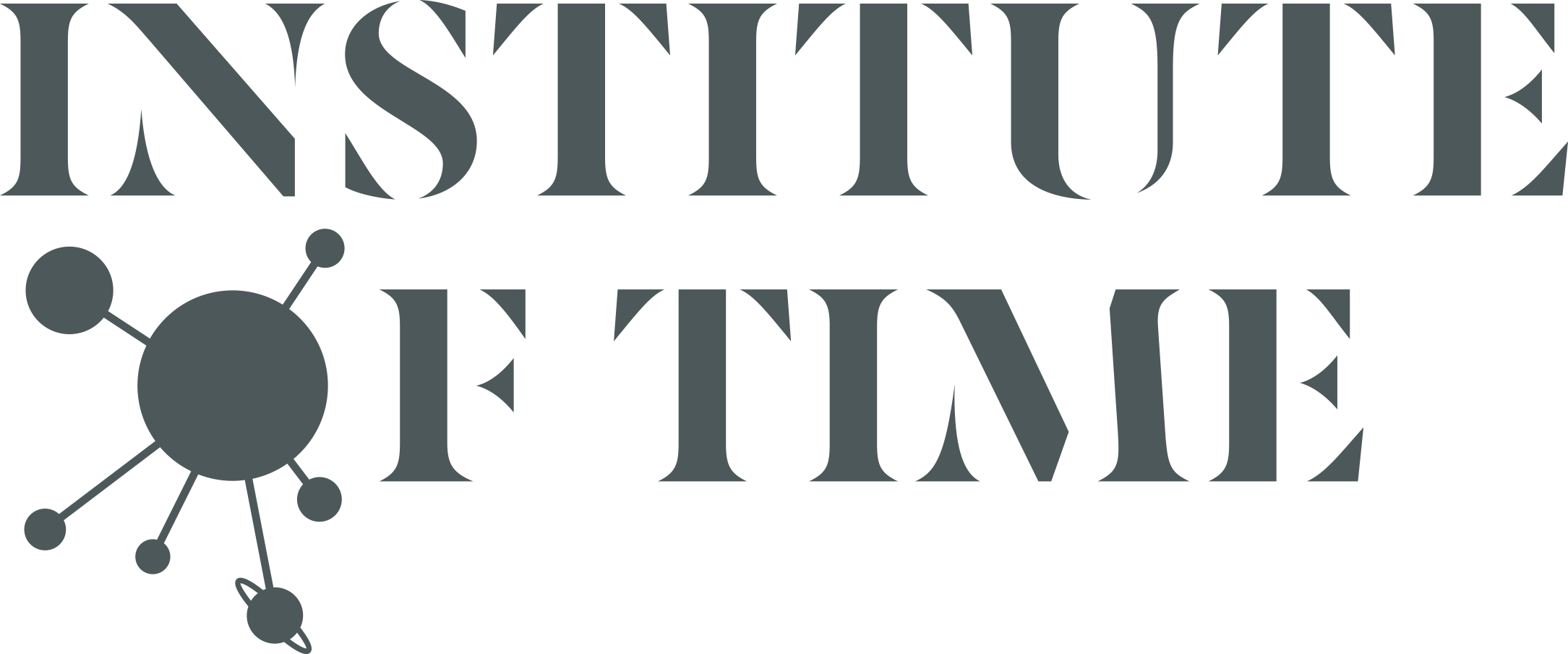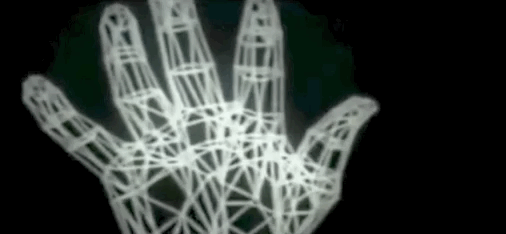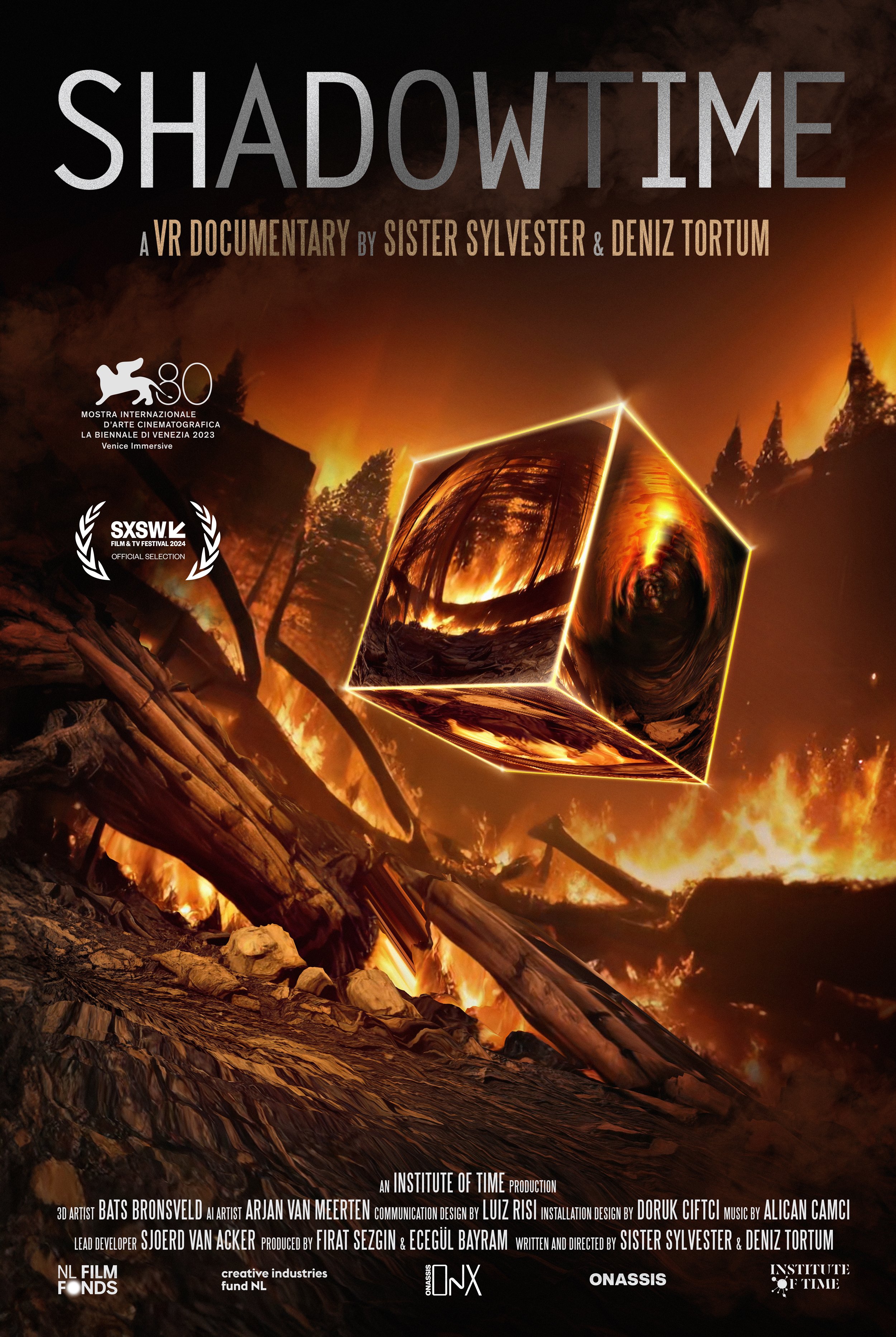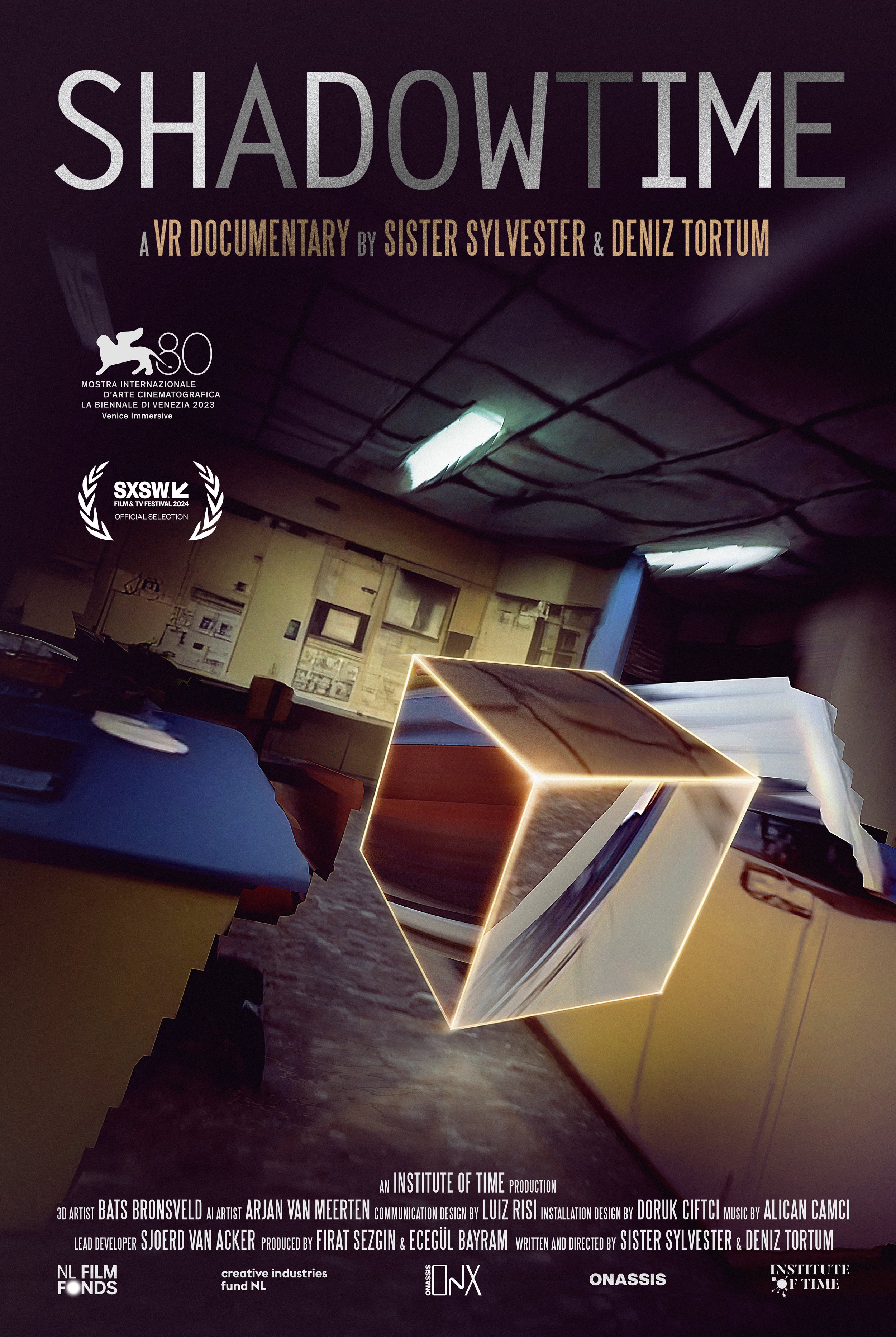SHADOWTIME
a VR documentary
by sıster sylvester & Denız tortum
“You are in two worlds at the same time.
Your body is in the other world, but your heart is in this one.”
To exist in the virtual world is to have two bodies, four hands, two hearts. Alma, a mysterious guide to this double world, leads you through questions around the climate crisis, irreconcilable realities, and the virtual as a place to take shelter.
Shadowtime is a new word coined for our age, describing the feeling of occupying two irreconcilable times simultaneously. It is being stuck in a traffic jam on your way to work and realizing that the gas in your engine is the compressed mass of prehistoric creatures. It is scrolling through your phone and remembering that the earth is changing irrevocably. In ‘Shadowtime’, we take these temporal incompatibilities and explore them in the realm of virtual reality and simulation theory.
VR users are always in two worlds at once: the physical and the digital. And so in Shadowtime, which blurs that clear boundary between reality and virtuality, you always inhabit two bodies—and at a certain point you also experience having four hands in augmented reality.
The term “shadowtime” has its origins in discussions about the Anthropocene. It is used to describe the feeling of living in simultaneous but irreconcilable realities—like being in virtual reality and the climate crisis (something Shadowtime repeatedly reminds you about). Is the shadow world of VR just a hiding place, an escape from reality? Or is it the perfect context for learning about how to be in two places at once?
1968 - Ivan Sutherland invents “Sword of Damocles” Head-Mounted Display
The VR begins its exploration with the first-ever virtual object: a digital cube. By moving the cube you can make all sorts of locations appear. They look realistic but are actually an additional, disorienting AI-generated factor. Another level of disorientation arises from the fact that it briefly seems like you are using the very first VR headset—a different one than the headset you are actually wearing.
The plaster model of Ed Catmull’s left hand with triangles and polygons drawn in ink
1972 - “A Computer Animated Hand” by Ed Catmull
‘Shadowtime’ Prototype Excerpt of user hands and the interaction with lag time
SCreenings
Venice Film Festival - September 2023
Geneva International Film Festival - November 2023
Thessaloniki International Film Festival - November 2023
South by Southwest SXSW - March 2024
Themes Explored
To live with the climate crisis, we tell stories that help us tackle the problem as well as stories that make sense of how we got to this place. The central conflict of Shadowtime is simple but resonant: every living thing, place or object preserved through digitization is destroyed in the real world. This intentionally fictitious myth disposes of complexity in cause-and-effect, forcing users to reckon directly with the world’s trajectory and their role in it. Technological progress and computational thinking enable us to see climate change. At the same time, these phenomena can obscure the possibility of collective action.
Shadowtime opens conversation about connections between “tech” and climate change: as exacerbators, and as a flawed repository of public hope.
We hope to engage audiences that are concerned about the climate crisis, but have undue faith in technological progress as its solution. We aim to encourage a more critical awareness of latent beliefs in things like simulationism, a technological singularity, and other “savior” thinking around climate crisis. We hope Shadowtime will serve as a reflection for the tech and science communities to see the blind spots in how we think of progress and societal good.
Relatıonshıp wıth our ark
The genesis of Shadowtime was as unconventional as it is inspiring. It began with two artists from vastly different disciplines, brought together by a shared, albeit somewhat skeptical, fascination with the VR medium. This collaboration first led to a short film “Our Ark” which premiered at IDFA 2021.
Our Ark looks at digitally preserving the life that is disappearing from earth. A kind of virtual Noah’s ark with 3D scans. The directors use this digital recording process as the starting point for a visual essay that leaves room for us to ask our own questions. Who are all these digital archives for?
"Shadowtime" and "Our Ark" both look at the link between technology, knowledge, and climate change. Together, they show a world that’s changing fast. Together, these projects present a diptych of a rapidly changing world: one depicts the desire to digitally preserve, and the other critiques the allure of the virtual and its impact on our physical realities.
Here is a short interview of the creators in our Installation at the Eye museum on November 2023, talking about exhibiting both works together
INSTALLATION
Engraving of a "portable" camera obscura in Athanasius Kircher's Ars Magna Lucis Et Umbrae (1645)
The idea to create a camera obscura installation came from our conversations about the way that the camera obscura had affected Descartes' thinking about the relationship between the body and the world, based in part on the book ‘Techniques of the Observer’ by Jonathan Creary. Camera obscura and VR are both technologies that are used in many industries, commerce, science, art and for entertainment purposes. The ubiquity across these fields made the camera obscura such a powerful symbol for Descartes and the modern thought that followed him. We anticipate that VR, and inhabiting a virtual world via a head-mounted display, will become a symbol for new ways of understanding the relation of the human body to the world. If VR was to create such a shift in our conception of this relation, what would it be? And what relation would it have to the climate crisis?
Housing the VR experience inside of a camera obscura also creates an installation in which the VR becomes a performance: so that audience members who are waiting in line or never put on the headset still have an experience, and an impression of the piece.
Here is a short documentation video of Our Camera Obscura installation in Venice Biennale 2023
credıts
Writer/Directors: Sister Sylvester, Deniz Tortum
Producers: Firat Sezgin, Ecegül Bayram (Institute of Time)
Lead Developer: Sjoerd van Acker
Music: Alican Çamcı
3D Artist: Bats Bronsveld
Alma: Rawya El Chab
AI Artist: Arjan van Meerten
Installation Artist: Doruk Çiftçi
Communication Design: Luiz Risi
Depthkit Advisor: Akmyrat Tuyliyev
Trailer: Sercan Sezgin
The neologism 'Shadowtime' was co-created by Ranu Mukherjee and the Bureau of Linguistical Reality (Heidi Quante and Alicia Escott).
Supporters
Team
Sister Sylvester (aka Kathryn Hamilton) works in performance and new media. She is a resident at ONX Studio; a 2019 MacDowell Fellow; an alumnus of the Public Theater New Works program and CPH:DOX lab. Her most recent film, “Our Ark,” co-directed with Deniz Tortum, and her most recent performance, ‘The Eagle and The Tortoise’ both premiered at IDFA and toured internationally. She creates installations and art books that become communal reading experiences, and is currently developing a series of work on synthetic biology.
Deniz Tortum works in film and immersive media. His latest film, “Our Ark” (co-directed with Sister Sylvester, 2021), premiered at IDFA and screened internationally; and his feature documentary, “Phases of Matter” (2020), premiered at the International Film Festival Rotterdam and received the Best Documentary awards at the Istanbul and Antalya Film Festivals. He is currently developing a series of work around geoengineering, spiritism, and the climate crisis.
Sjoerd van Acker is a New Media Artist and VR developer working under the name NO FISH. He is interested in the cultural issues at the root of the climate crisis, resulting in experiences in which you see yourself and your environment in a different way.
In 2020 he graduated from the University of the Arts Utrecht (HKU) with his graduation project rLung, a VR experience in which you explore your surroundings with your breath. The experiences he creates arise out of experiments with (new) technology, embracing unexpected outcomes. Besides his personal work he also makes virtual art exhibitions for museums and artists and works with directors and artists to try to realize their VR experiences.
Fırat Sezgin is a producer working in Film and in New Media with a background in producing feature length films as well as documentaries. After graduation from Emerson College (2011) with a BA in Producing for Film, he returned to Istanbul where he worked in different positions in various productions. In his last five years in Istanbul he worked at the largest Turkish studio BKM, where he worked in national and international licensing & distribution as well as more than 20 co-productions. He co-founded Institute of Time to work on independent projects including 3 feature creative documentaries. His last VR work Floodplain premiered in Venice Film Festival. His latest documentary co-production world premiered in the IFFR 2020. He now resides in the Netherlands.
Ecegül Bayram is a producer with a passion for social sciences and genre fiction. She holds a BFA in Film & TV from NYU Tisch School of the Arts with a minor in Politics. After her return to Istanbul, she has started working at Institute of Time, a new media company with a focus on extended reality (XR) and documentaries. Her previous works have been screened at Venice, IDFA, Hot Docs, Dok Leipzig, True/False and more. Her last VR work “Shadowtime” did its world premiere at the 80th Venice Film Festival.
























